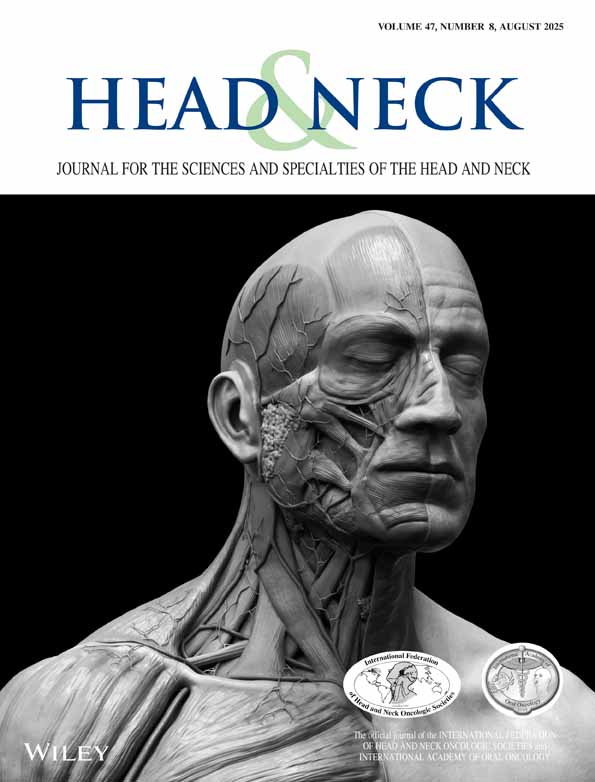Skull base cerebrospinal fluid fistula: a novel detection method based on two-dimensional electrophoresis
Abstract
Due to a processing error, this manuscript was inadvertently published online in Head & Neck on January 16, 2004, without Table 1. The publisher has replaced the incorrect version of the published article with the correct version containing Table 1. For archival purposes, the earlier version is available by contacting the publisher at [email protected]. This should be considered the definitive version of this article.
Background.
The detection of the presence of cerebrospinal fluid (CSF) in nasal secretions contaminated with blood and mucus remains a challenging clinical problem.
Methods.
A prospective study was conducted from November 1998 to February 2002, including 42 patients. Samples (250 μL) of nasal secretions were analyzed by two-dimensional electrophoresis (2-DE). Plasma, mucus, and CSF were identified by specific proteins markers corresponding to characteristic trains of spots. Intrathecal injection of fluorescein followed by the detection of fluorescein on endoscopic examination of the nasal cavities was considered a positive reference for CSF rhinorrhea.
Results.
In all cases of positive fluorescein test, we unambiguously observed the presence of several specific CSF markers onto the 2-DE gels. Conversely, all negative fluorescein tests were associated with the absence of CSF-specific spots.
Conclusions.
Two-DE analyses of biologic fluids of nasal origin should be considered as a reliable diagnostic tool in case of suspicion of CSF leak. © 2003 Wiley Periodicals, Inc. Head Neck 25: 464–469, 2003




